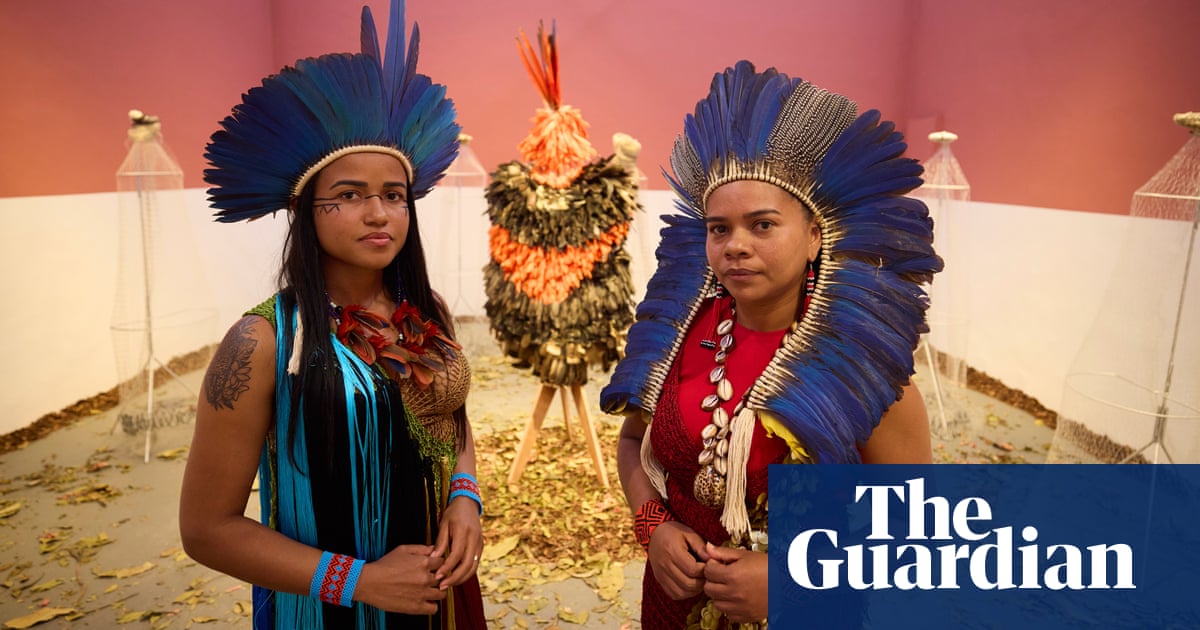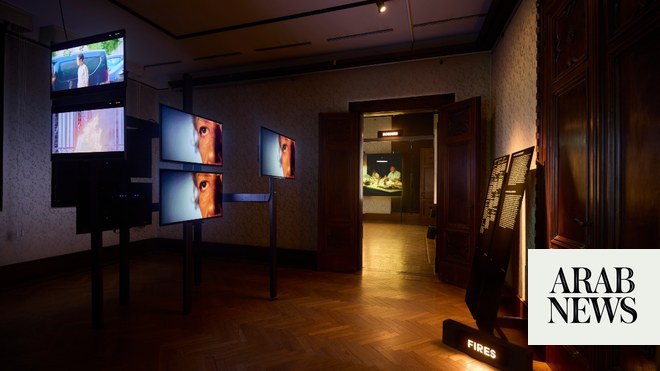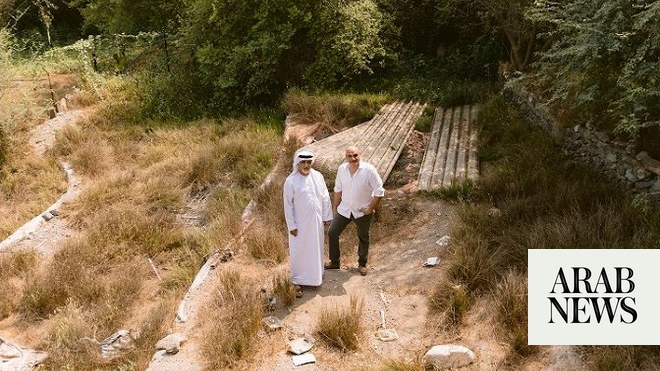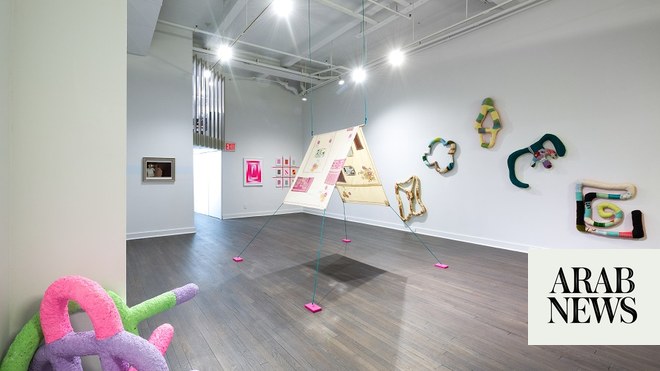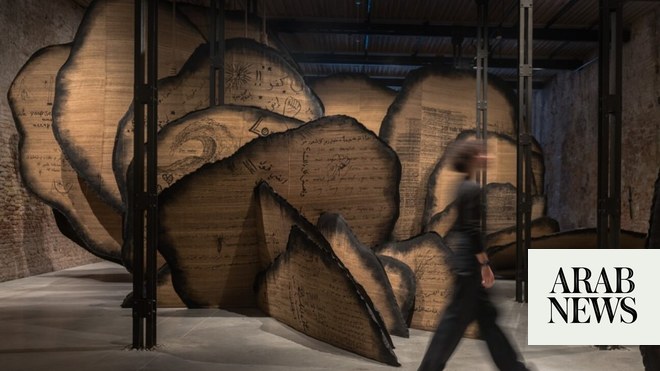
VENICE: No event in the international art scene is more anticipated, or debated, than the Venice Biennale. This year’s edition, “Foreigners Everywhere,” curated by Adriano Pedroso from Brazil, features 331 artists and 86 nations, including four Gulf countries as well as Lebanon and Egypt.
For the latest updates, follow us on Instagram @arabnews.lifestyle
Saudi Arabia
Women’s voices chanting in unison fill the air of the Saudi Pavilion at Venice this year. “Shifting Sands: A Battle Song” was created by Saudi artist Manal AlDowayan, and hundreds of women from across the Kingdom participated in its creation. The exhibition, which includes large-scale installations in the form of desert roses filled with writing and drawings by the Saudi female participants whom AlDowayan worked with, aims to showcase the evolving role of women in the Kingdom while also striving to dispel media narratives that have long defined them. The chanting is derived from traditional battle songs once performed by Saudi men before they went into battle. Here they are chanted by women in a powerful chorus of strength and resilience, backed by recordings of the wind passing through sand dunes. The work, AlDowayan tells Arab News, “is about change, subtle changes — like those of a sand dune — the surface changes, but the core stays the same.”
UAE
Emirati artist Abdullah Al-Saadi is presenting “Sites of Memory, Sites of Amnesia” at the National Pavilion of the United Arab Emirates. It’s an introspective show consisting of drawings, sculptures, paintings and installations charting Al-Saadi’s travels around his homeland. “Traveling and understanding the natural world around me has always been an important part of my work,” Al-Saadi, who has even used rocks from the Emirates as his ‘canvas’ for some of the works, told Arab News. “Through this presentation in Venice, I hope visitors will enjoy tracing the travels I have taken over the past few years and also think about the world around us, and our place within it.”
Visitors will also be presented with gifts: maps and scrolls in colorful traditional chests from the region, which will be removed and presented to guests by actors from the UAE.
Qatar
While Qatar doesn’t have a national pavilion at the biennale, it is presenting “Your Ghosts Are Mine: Expanded Cinemas, Amplified Voices” — a group show of films by artists from across the Arab world, Africa and South Asia, as well as video installations from the collections of Mathaf: Arab Museum of Modern Art and the Art Mill Museum (scheduled to open in 2030). All the films were backed by the Doha Film Institute.
“For me, it was important to show movies reflective of the theme of the biennale — so, revolving around immigration, foreigners, personal diaries and self-portraits and stories from women — all coming from independent (artists) in the Global South, whose voices are not always shared,” the Paris-based curator Matthieu Orlean told Arab News.
Egypt
Alexandrian-born artist Wael Shawky has created “Drama 1882,” a 45-minute film for which he also composed the music, for Egypt’s national pavilion, which — in the first week of the biennale at least — has proved to be one of the most popular pavilions at this year’s event.
The film is based around Egypt’s nationalist Urabi revolution against imperial influence in the late 19th century and Shawky uses historical and literary references as starting points from which to weave together a story that fuses fact, fiction and fable, while also exploring national, religious and artistic identity.
“I worked with performers who enacted a play in a theater for the film,” Shawky told Arab News. “The film strives in part to connect the idea of history to drama — drama regarding the connection to catastrophe and drama regarding cynicism. I like to analyze the authenticity of history, especially Egyptian history. When one makes films about history there is this gap between truth and myth.”
Lebanon
Lebanese artist Mounira Al-Solh’s multimedia installation “A Dance with Her Myth” combines drawing, painting, sculpture, embroidery, video, and audio, and guides viewers through ancient Phoenicia. The piece, Al-Solh explains to Arab News, is inspired by the tale of Europa, the daughter of a Phoenician king who was abducted from the city of Tyre in Lebanon by the Greek god Zeus, who had transformed himself into a white bull to trick her into riding him, then took her off into the sea.
“The (work) pays tribute to the ancient multicultural heritage of Lebanon,” Al-Solh says.
In the center of the pavilion is an unfinished boat, that Al-Solh says references “the tension that women still face today, despite their emancipation.”
Oman
Oman’s second participation in the biennale, is an exhibition titled “Malath — Haven.” It includes work from five Omani contemporary artists: Ali Al-Jabri, Essa Al-Mufarji, Sarah Al-Aulaqi, Adham Al-Farsi and Alia Al-Farsi (who also curated the show). “We used the word ‘haven’ in the title because, since antiquity, foreigners — including the Romans, Portuguese and Indians — have visited Oman,” Alia Al-Farsi told Arab News. The works on display — from Al-Farsi’s own colorful and expressive mixed-media murals (such as “Alia’s Alleys,” pictured here) to Al-Aulaqi’s “Breaking Bread,” which includes a large sculpture of a niqab made from silver spoons — reflect both traditional and contemporary life in Oman.
“As an Omani creative with an international background, my aim was for the exhibition to serve as a sanctuary for visitors and travelers, allowing stories to unfold and intertwine, mirroring how our country finds its richness in intercultural dialogue,” the curator said in a statement.





